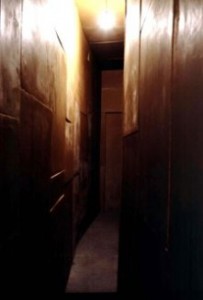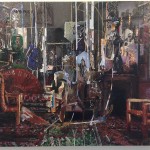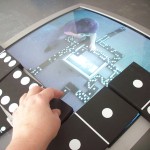While I went to Amsterdam a little while ago for other purposes, by chance I went past…
A room for smelling mystery
 Just another post about a work of art that intrigues me: Wachsraum (1992) by Wolfgang Laib. It is part of the permanent collection of the dePont, and I experienced it there – it’s overpowering.
Just another post about a work of art that intrigues me: Wachsraum (1992) by Wolfgang Laib. It is part of the permanent collection of the dePont, and I experienced it there – it’s overpowering.
Erica Jacobs Lord describes it in an article in MAhkuZine #6, and since that description is much better than anything I can do I will qote from the article here:
“What if our everyday spaces were comprised of more than what can be seen with the naked eye? They would not only appeal to the eyes, but to the nose, fingertips, and ears. This type of space would be difficult to define or even lay down in a plan because it cannot be described in black and white, just as a menu entry cannot define the define the delicate flavors of a dish, only list them. This space needs to be touched and lived in, explored with the senses, not only consumed with a rational eye. It is sometimes an impractical pace because it is for people who, by nature of being human beings, are not practical themselves all the time themselves. This is a space that, when it feels like it, reaches towards poetry. Wolfgang Laib’s Wachsraum ( 1992 ) has these difficult, impractical, yet poetic qualities. A narrow but tall corridor is lined with plates of beeswax and lit by a single bare bulb. The honest nakedness of the bulb contrasts with the rich scents of the beeswax. The walls glow, but are impossible to render well in a photograph – the lighting is difficult and there is no natural way to get the image in frame.
The space is actually too narrow, too tall without a standard functional reason. There is only the need to make an extraordinary impression. To experience it, you have to be there, walk through it, inhale deeply and run your fingers along the wall, taking in physical impressions that a reproduction could never give. Unfortunately the Wachsraum is relegated to a museum. What if it were possible in everyday life to have a wall worth stroking, or a special room in the house which is there for the sake of fun or mystery? ”
There’s my problem really: I do experiments with touch and smell, but how to represent these by visual/auditive means?
| « Research essay | <-- previous post | next post --> | Microstates, macrostates, exformation » |
|---|








